Flower beds come in different shapes and sizes and are an excellent way to organize and spice up your yard. How wide should a flower bed be? We've researched this to find out and share the answers with you.
To make working on your flower bed comfortable and easy, plan for it to be at least three feet wide and six to eight feet long. If the bed is more than five feet wide, you will need to create a path, such as stepping stones, to have easy access.
Planning and setting up a design for your garden will be much simpler if you know the suggested size of a flower bed. Continue reading as we will discuss this and more in the following sections below.
How Wide Should A Flower Bed Be?
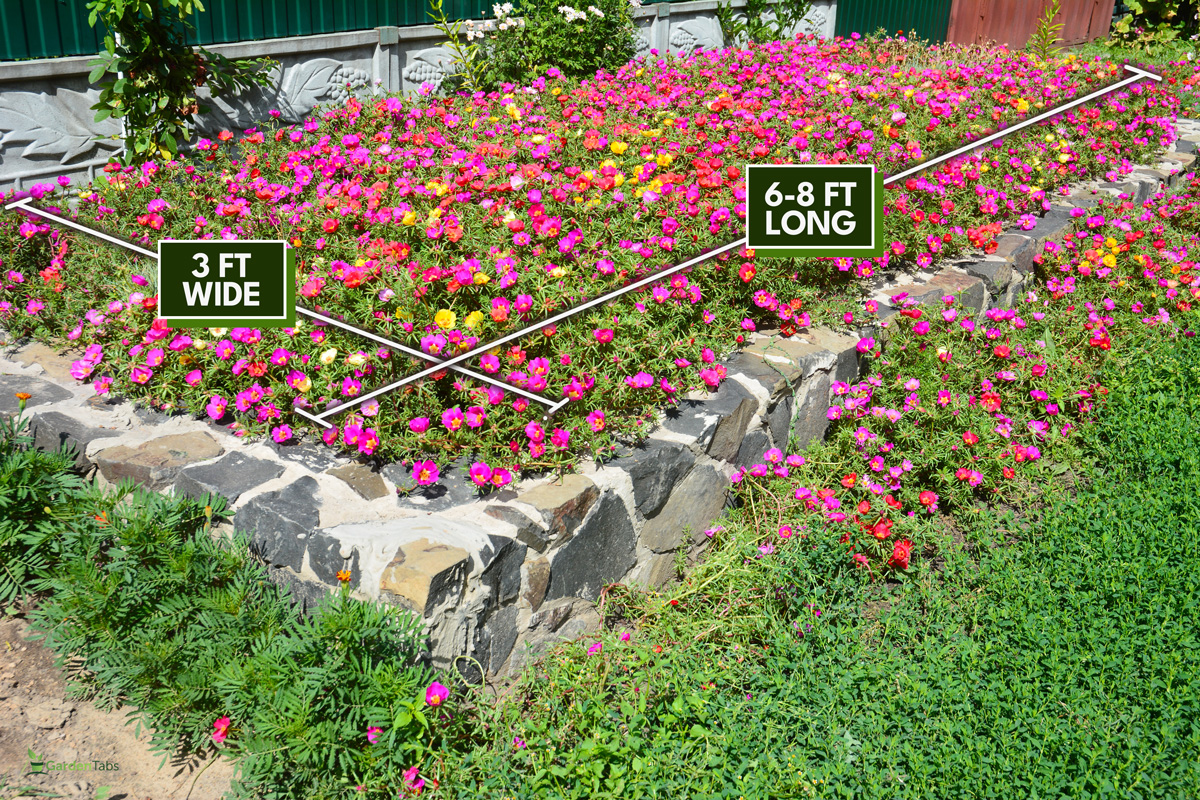
Adding flowers can enhance your landscape. A flower bed should have enough room for plants once they're fully mature. You can start small and work your way up in size.
For beginners, start with a flower bed at least three feet wide and six to eight feet long. This size is perfect for easy access when growing plants and tending a low-maintenance flower garden.
When it comes to perennials and bulbs, a flower bed should also be wide enough. A bed that is wider than five feet will need a path, such as stepping stones, so that you can perform regular maintenance such as watering, weeding, fertilizing, and mulching.
The size of your flower bed will still determine how much room you will give your annuals and perennials. The plants' height also influences the size of the bed. For proper scaling, taller plants need a wider bed.
How To Utilize The Space In Your Flower Bed
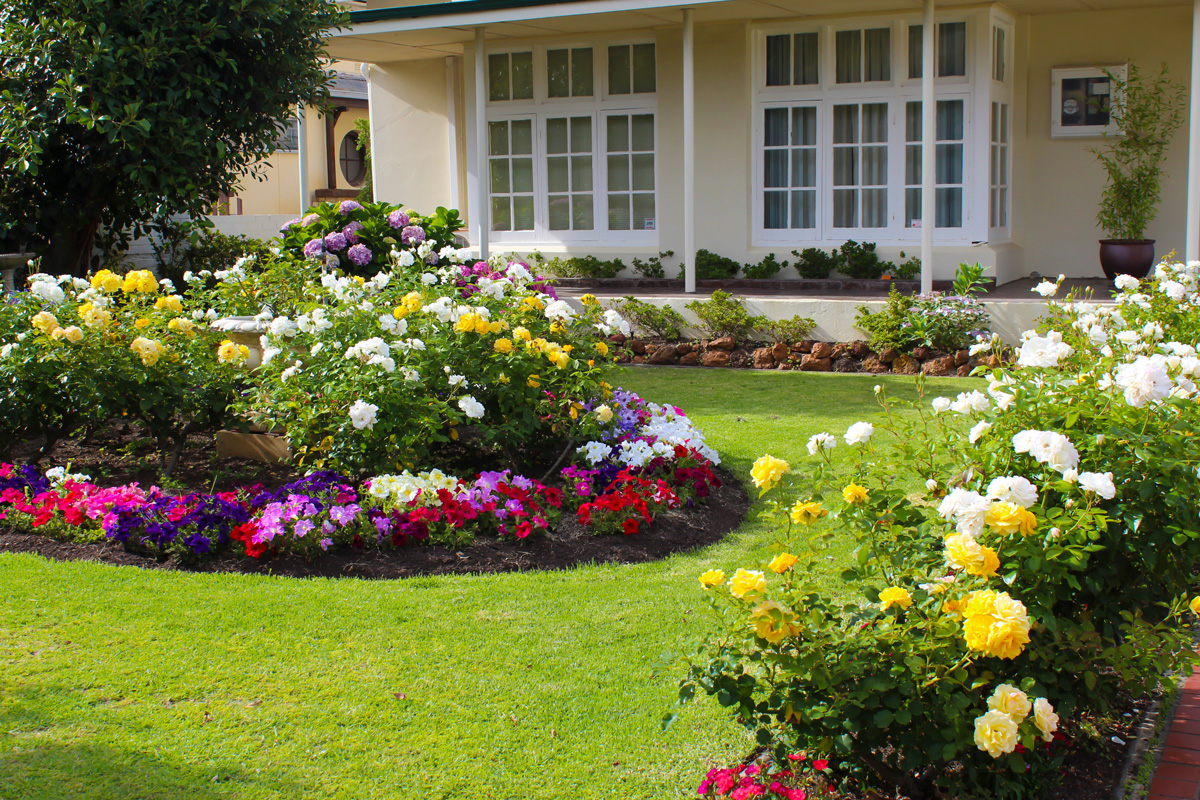
Even if you don't think of yourself as artistic, start by sketching the layout of your flower bed. The sketch doesn't need to be accurate or even scaled. Having a vision for how you want your space to look is more important.
When looking into your flower options, take note of the various plant sizes when fully grown. This is important to consider when determining the ideal distance between them.
The ideal spacing for annuals like ageratum, lobelia, pansies, dwarf French marigolds, and sweet alyssum is six inches apart. Plants whose spacing is too close grow slowly and are more susceptible to disease.
Small perennials should be spaced six to 12 inches apart, perennials two to three feet tall should be 12 to 18 inches apart, and taller perennials should be 18 to 36 inches apart.
When it comes to utilizing your space, consider the scale of different features and sizes of the flowers and the size of your area.
A flower bed that is wider than three feet would overwhelm a small front yard and a small home but will fit and look balanced in a large front yard that can accommodate wider beds or more than one flower bed.
Planning a Flower Bed
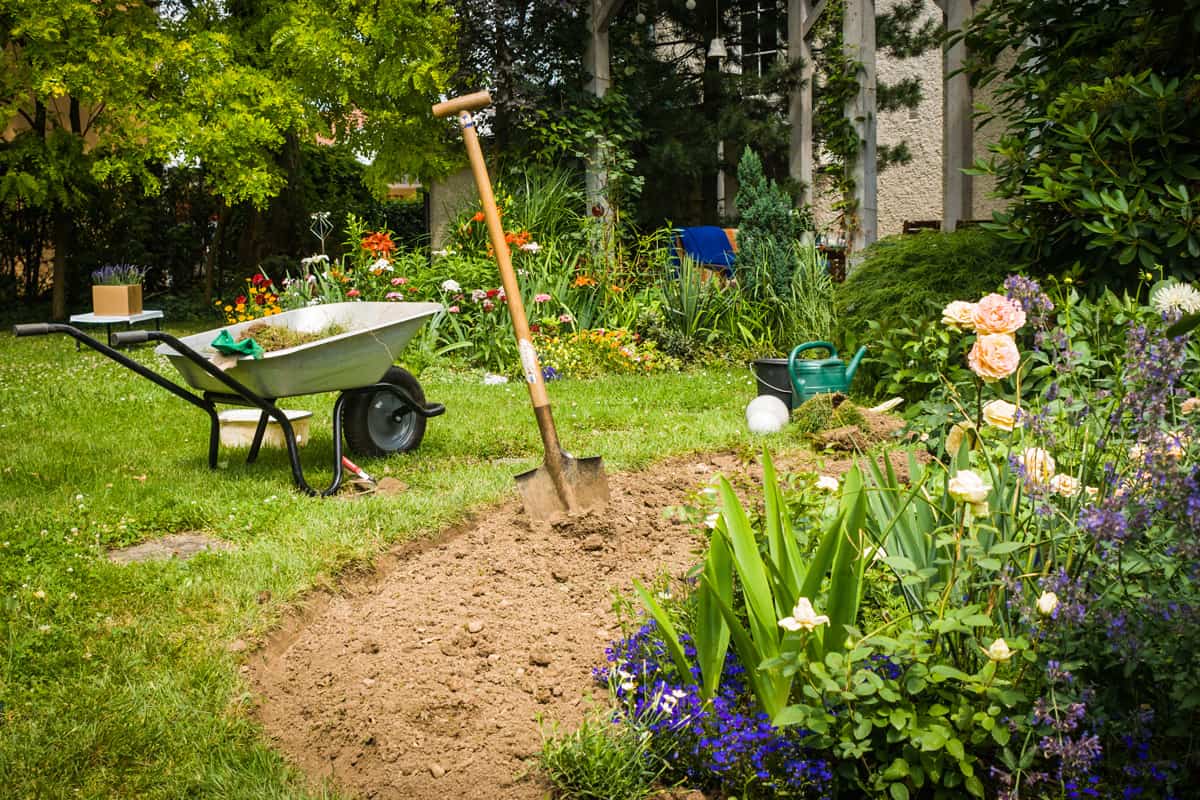
Planning what you will plant and the placement of plants should begin long before you dig your ground. It is best to research how much space the kinds of flowers will occupy, their colors, and the texture they'll add to your garden.
Location
You must know what your plant needs. Some plants can tolerate shade, while others can tolerate full sun exposure. This will affect the location of where you should place your plants.
Layout
When it comes to placement, plant clusters of individual flowers in "drifts" that progressively blend into one another.
The best arrangement is increasing the plants' height from front to back. The shortest plants should be in front, while the tallest plants should be in the back.
Shape
Flower beds can be of any shape. Angular, square, round, or curved are typical shapes. Spend some time walking around the boundary of your flower bed to make sure you can see it from every angle.
Understanding how it will appear from different perspectives will help you decide what shape of bed will suit your preference.
Color
Pick hues that complement one another well. The best color combinations help set moods when designing a flower garden. Warm colors are energizing, and cool colors are relaxing to the viewer.
Texture and Harmony
Choosing plants with different growth characteristics will add texture to your garden. Plants that are fillers add fullness because of their mounding growth habits.
Spillers, on the other hand, are vine-like plants that spread and grow outside of the bed, and "thrillers" are large plants that grow upright to add extra height and are commonly positioned in the middle because they are the viewer's primary focus.
Types of Flower Beds
Borders and islands are two different types of flowerbeds. Island beds are not situated next to a house or other structure, whereas border beds are typically close to a fence or home.
Borders
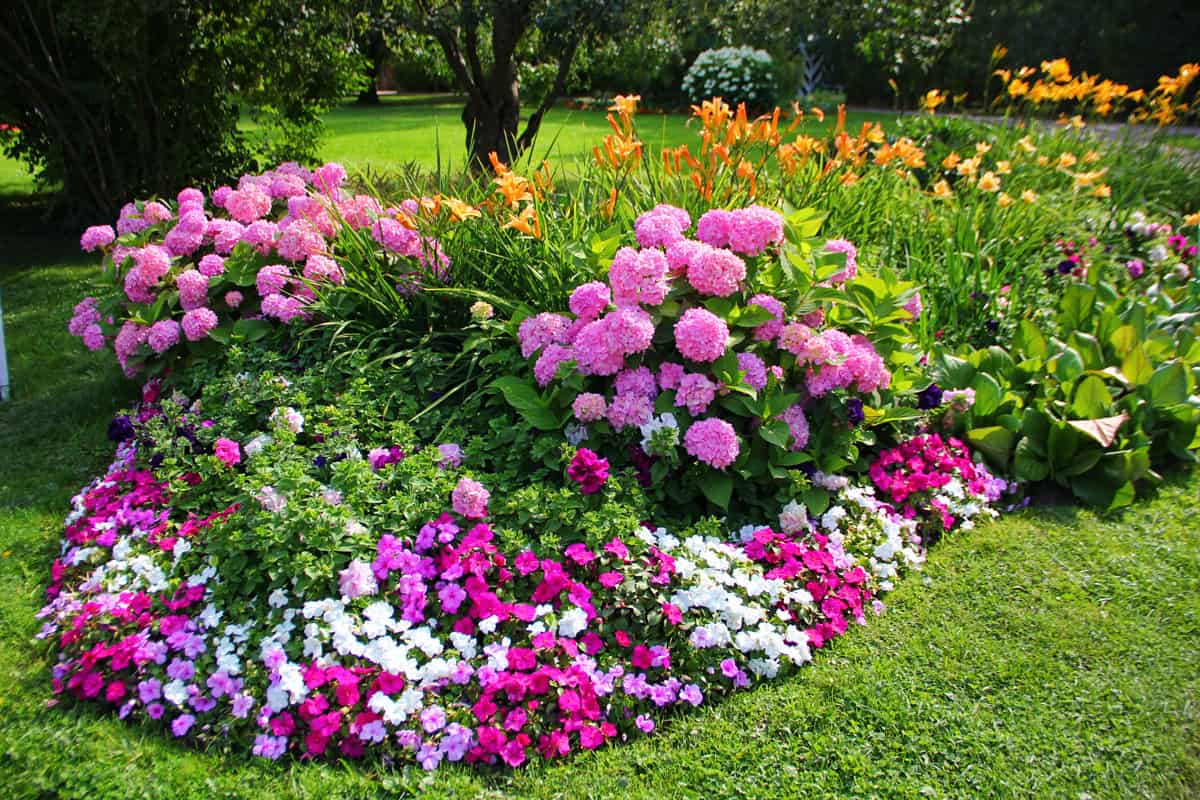
Borders are flowerbeds that are placed in front of a house, fence, or walkway. The border style will vary depending on the structure of your home or yard.
Borders can have formal edges, curved edges, or straight edges. Most flower borders are for ornamental purposes because they go along fences, close to buildings, and on the edges of pathways.
Islands

Islands are flower bed layouts without a background. They can be of any shape that piques your interest, including square, round, or rectangular. Unlike borders, this layout can be seen from all sides and usually float like an island in a yard.
Maintaining A Flower Bed
There are numerous ways to maintain your flower bed. Here are a few methods for keeping unwanted grass out of your flower beds.
Weeding
Weeding is the most accessible and affordable way to keep grass out of your flower bed. The grass is only temporarily kept out, but it is cheap and simple to do. For convenience, you can use a garden hoe to easily get rid of unwanted grass and weeds.
Click here to see this garden tool on Amazon.
Mulching
Most plants are drawn to sunlight by nature. Maintaining a layer of mulch on top of your flower beds will create a barrier and keep grass from intruding on your flower beds.
Edging
A barrier will not only keep grass from spreading on your flower beds but can also give them a more decorative look. Installing an edging around your flower bed's perimeter is a good choice. Examples of everyday materials include boulder stone, chopped stone, scrap wood, and rocks.
What to Grow in your Flower Beds
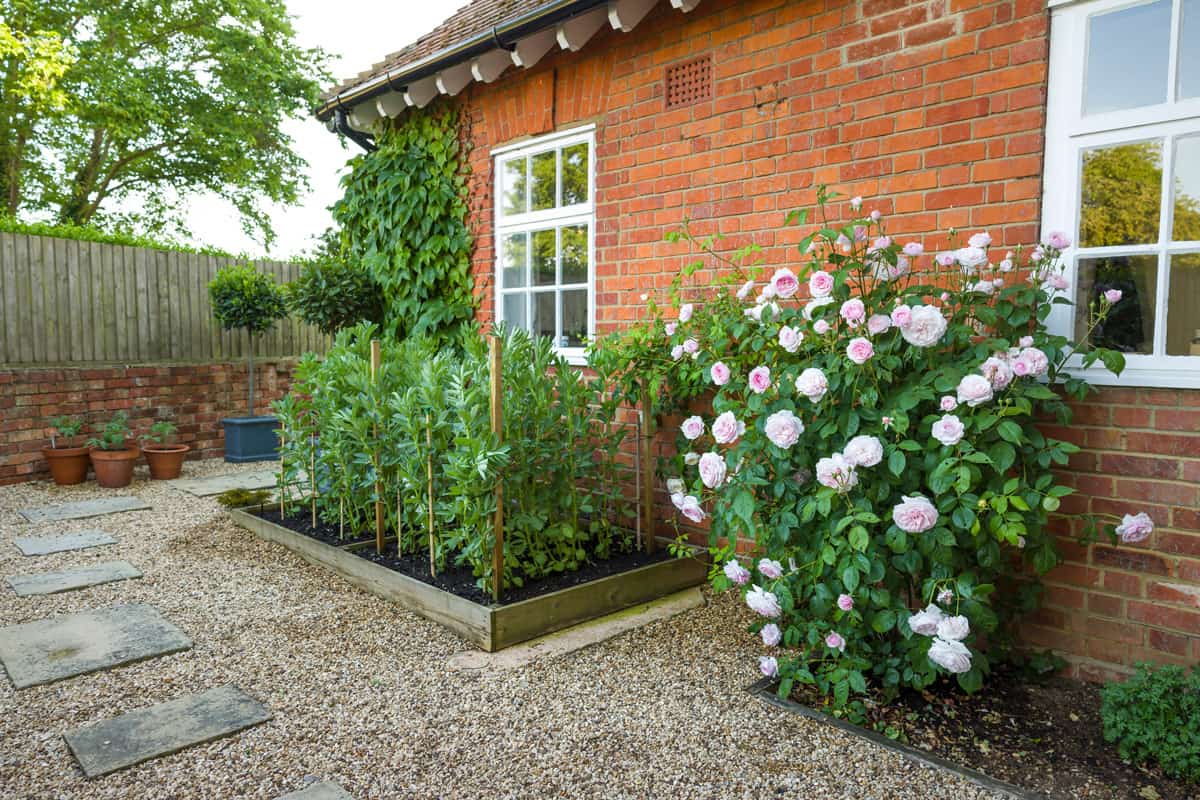
Consider the types of flowers you want to grow before deciding on the size of a flower bed. This will allow you to reach the soil for maintenance or install plants without walking in the bed.
The primary distinction between annual and perennial flowers is the duration of each blooming period. Annuals only bloom for a single growing season and won't return the following year, while perennials come back yearly.
Combining annuals, perennials, shrubs, vines, and vegetables makes a beautiful, well-balanced garden. Here are some of the best and easy-to-grow annuals and perennials to add to your garden.
Annuals
Annual plants are those that grow, flower, set seed, and then perish, all in the same growing season. Annuals typically have short growing seasons and must be replanted every year when the first frost arrives.
Here are some annuals you can add to your garden.
- Begonias
- Zinnias
- Marigolds
- Petunia
- Sunflower
Perennials
Perennials are plants that go dormant in the winter and come back the following year. They typically only bloom once a year, in the spring, summer, or fall.
Perennials have fewer flowers than annuals because their energy is directed toward developing strong roots rather than flowers and seeds. Here are some perennials you can add to your garden.
- Peony
- Salvia
- Black Eyed-Susan
- Daylily
- Catmint
Wrapping Things Up
The size and shape of your flower bed will be determined by how much space you have available in your yard and your preferences.
When choosing plants for your landscape design, go with plants of varying sizes, textures, and colors to create a captivating display.
Once you've learned how to design a flower garden, be ready to maintain your plants so they will continue to bloom and flourish for many more seasons.
Did you find this article useful? If you did, here are some other related articles you can read:

